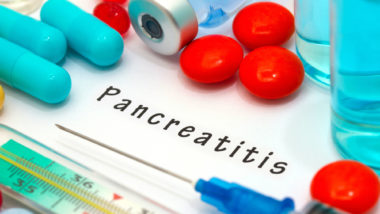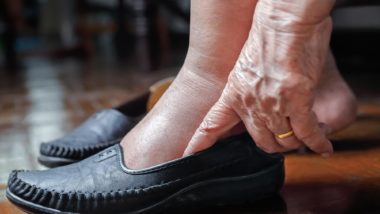Top Class Actions’s website and social media posts use affiliate links. If you make a purchase using such links, we may receive a commission, but it will not result in any additional charges to you. Please review our Affiliate Link Disclosure for more information.

The study states that the FDA Adverse Event Reporting System has identified 55 individuals who contracted the condition while receiving SGLT2 inhibitors for the treatment of type-2 diabetes. This is the most recent development in the suspected connection between type-2 diabetes medications and necrotizing infections.
According to the study, every patient required surgical debridement due to the severity of their condition. Eight patients developed diabetic ketoacidosis, nine developed sepsis or went into septic shock, and four suffered from acute kidney injuries. Multiple patients required amputations related to gangrene complications, and three patients died.
Investigators noted the increased number of reports could stem from the heightened awareness of Fournier’s Gangrene, but could also be related to growing number of patients with diabetes who are being prescribed SGLT2 inhibitors. In anywhere from 32 percent to 66 percent of all cases of this necrotizing bacteria of the genitals, diabetes has been determined to be a comorbidity.
The study’s lead author, Dr. Susan J. Bersoff-Matcha, MD, doesn’t feel that diabetes by itself causes Fournier’s Gangrene or else more cases would have been reported. She and fellow authors found just 19 cases of the malady affiliated with other types of blood-sugar-control drugs that were reported to the FDA or noted in medical journals over the span of 35 years.
Researchers said of the 55 reported cases of the flesh-eating bacterial infection found in patients on SGLT2 inhibitors, the average amount of time between starting the drug and diagnosis of the gangrene was 9 months. Of the group, 39 were men and 16 were women. A minimum of 25 patients needed more than one surgery. One patient required 17 surgeries related to the Fournier’s Gangrene. Four of the patients required skin grafts, and eight patients underwent a fecal diversion, which means they needed an ileostomy or colostomy to divert bowel movements.
Six patients had to go to their doctors on several occasions before their problem was diagnosed as the rare flesh-eating bacteria. This might be because the issue is not common and because the initial symptoms of tiredness and fever could be associated with many ailments.
Researchers said one of the most important clues that Fournier’s Gangrene is the correct diagnosis is the presence of pain that seems out of proportion to the rest of the results of a physical examination.
Due to these possible side effects, the FDA has stated that they will be requiring pharmaceutical companies to add a warning to the prescribing information of all drugs in the SGLT2 inhibitor class.
Necrotizing Fasciitis and Fournier’s Gangrene
Necrotizing fasciitis, a kind of flesh-eating bacterial infection, is a type of rare bacterial infection that occurs when bacteria enters the body through a break in the skin. The infection is fast moving and quickly spreads throughout the body, causing the death of healthy tissue as it travels. Without immediate treatment, necrotizing fasciitis may be deadly.
Fournier’s Gangrene is a type of necrotizing fasciitis that develops in the genital region, often in the perineum. Although the disease is rare, approximately 1,800 cases of the condition have been reported in English language medical texts since 1950.
Symptoms of Fournier’s Gangrene may include a general feeling of malaise or being unwell, redness, swelling, or a foul odor in the genital area, severe pain, fever, nausea, dizziness, or ulcers. Treatment may include antibiotics. However, antibiotics are often unable to reach all of the infected areas of the body due to tissue death and reduced blood flow. In many cases, doctors have to surgically remove the dead tissue. Some patients may also require blood transfusions or skin grafts.
SGLT2 Inhibitors and Gangrene
SGLT2 inhibitors are a newer type of diabetes medications, first introduced to the market in 2013. SGLT2 inhibitor drugs include Invokana, Farxiga, Steglatro, Jardiance, and more. Approximately 1.7 million patients take SGLT2 inhibitors for the treatment of diabetes, according to the FDA’s Center for Drug Evaluation and Research. These drugs stimulate the kidneys to filter excess blood sugar out of the body through the urine. Possible side effects of this sugar filtering include urinary tract infections, yeast infections, and other genital infections, as well as Fournier’s Gangrene.
If you or a loved one has taken SGLT2 inhibitors for the treatment of type-2 diabetes and have developed dangerous side effects including Fournier’s Gangrene, you may be eligible to hire an experienced attorney and file a class action lawsuit to pursue compensation for your injuries.
Join a Free Diabetes Medications & Flesh-Eating Infection Lawsuit Investigation
The type-2 diabetes medications linked to the flesh-eating infection include:
- Invokana
- Invokamet/Invokamet XR
- Farxiga
- Xigduo XR
- Qtern
- Jardiance
- Glyxambi
- Synjardy/Synjardy XR
- Steglato
- Segluromet
- Steglujan
If you or a loved one took one of the type-2 diabetes medications listed above and suffered from a flesh-eating genital infection, you may qualify to join this diabetes medication lawsuit investigation. Fill out the FREE form on this page for more information.
ATTORNEY ADVERTISING
Top Class Actions is a Proud Member of the American Bar Association
LEGAL INFORMATION IS NOT LEGAL ADVICE
Top Class Actions Legal Statement
©2008 – 2024 Top Class Actions® LLC
Various Trademarks held by their respective owners
This website is not intended for viewing or usage by European Union citizens.
Get Help – It’s Free
Join a Free Diabetes Medications & Flesh-Eating Infection Lawsuit Investigation
If you qualify, an attorney will contact you to discuss the details of your potential case at no charge to you.
PLEASE NOTE: If you want to participate in this investigation, it is imperative that you reply to the law firm if they call or email you. Failing to do so may result in you not getting signed up as a client or getting you dropped as a client.
E-mail any problems with this form to:
Questions@TopClassActions.com.
Oops! We could not locate your form.












